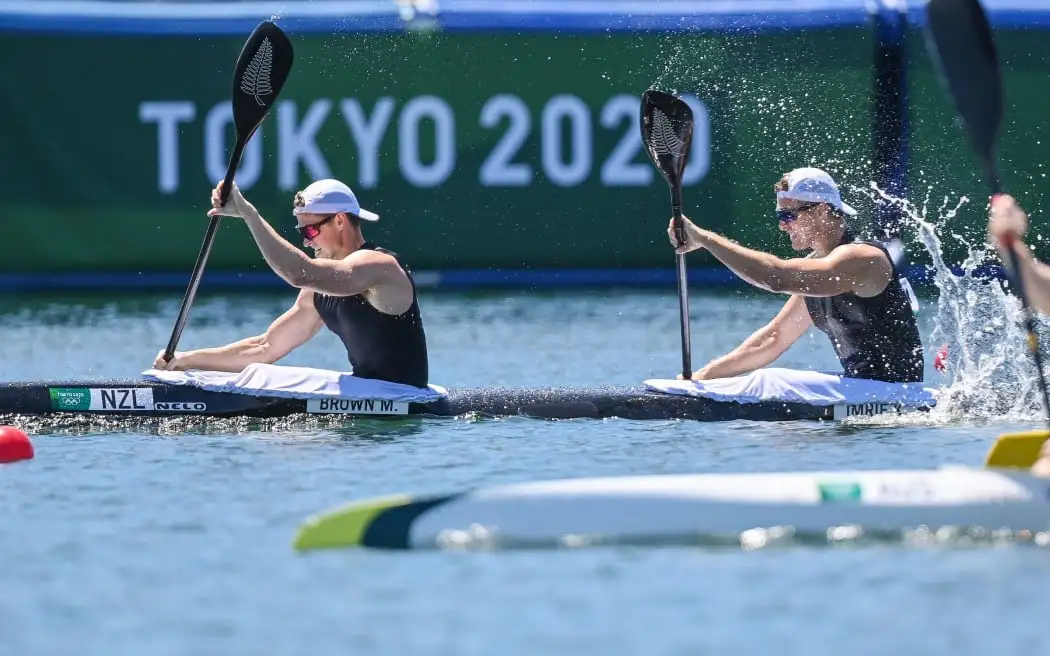Kayak racing is a captivating water sport where participants use kayaks, small narrow watercrafts powered by double-bladed paddles, to race across water bodies. From tranquil lakes to raging rivers, the versatility of the racing kayaks and the skill of the paddler make for thrilling races.
The kayak has roots stretching back thousands of years to the indigenous peoples of the Arctic region. Originally made of seal or other animal skins stretched over wooden or whalebone frames, they were used primarily for hunting and transport. Over the centuries, as the sport gained popularity globally, the design, materials, and purposes of the kayak evolved, giving rise to the racing variants we see today.
The Ultimate Racing Kayaks Guide
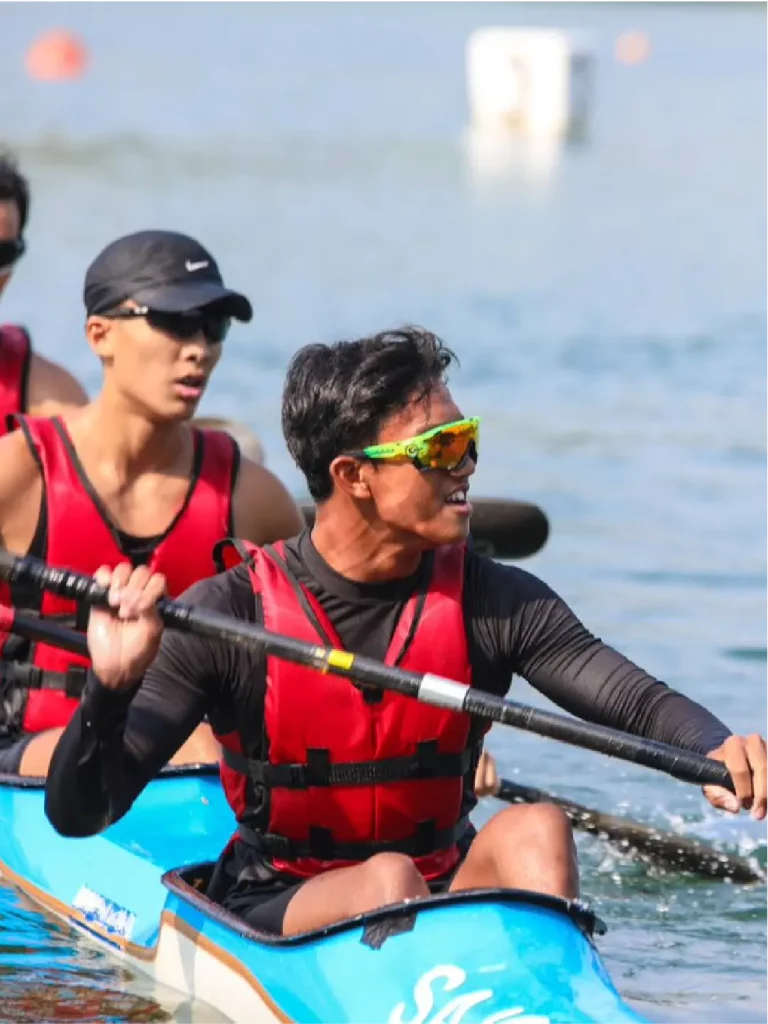
Different Types of Racing Kayaks
A. Sprint kayaks
1. Characteristics and design specifics
Sprint kayaks are designed for speed and are predominantly used in flat water competitions. They tend to be long and narrow to increase hydrodynamic efficiency. Stability can be a challenge due to their slim design.
2. Common uses in competition
They’re mainly used in Olympic and international flat water races, typically spanning distances of 200m, 500m, and 1000m.
B. Marathon kayaks
1. Distinctions from sprint kayaks
While sharing similarities with sprint kayaks, marathon versions are designed for longer distances, typically between 10km to 40km. They often come with added storage space for hydration and nutrition.
2. Popular marathon kayak races globally
The ICF Canoe Marathon World Championships and the Devizes to Westminster International Canoe Marathon in the UK are among the most renowned.
C. Surf skis
1. Design, purpose, and unique features
A surf ski is a type of long, narrow, and lightweight kayak with an open cockpit. It’s tailored for speed but is more adept at handling ocean waves compared to traditional racing kayaks.
2. Suitable water conditions and races
Primarily used in ocean and big wave conditions, famous races include the Molokai Challenge in Hawaii and the Doctor race in Australia.
D. Slalom kayaks
1. Design details for navigating rapid courses
These are agile boats made for navigating through a rapid river course set with a series of gates. They’re shorter than sprint kayaks, allowing for quick turns and maneuvers.
2. Notable slalom races
The Olympic Canoe Slalom and the ICF Canoe Slalom World Championships stand out.
E. Downriver kayaks
1. Adaptations for endurance and rapid navigation
Designed for extended trips down fast-flowing rivers, they combine features of slalom and marathon kayaks. They’re durable and can handle both high speeds and rough waters.
2. Recognized races and championships
Examples include the Avon Descent in Australia and the Green River Narrows Race in the USA.
Key Components of a Racing Kayak
A. Hull design and its importance
1. Shapes and their effects on speed and stability
The hull shape determines much of the kayak’s behavior in water. Flat hulls offer more stability, while rounded ones are faster. V-shaped hulls cut through water more efficiently but can be less stable.
2. Material choices (carbon fiber, Kevlar, etc.)
Materials play a critical role in the kayak’s weight, durability, and performance. Carbon fiber offers a blend of lightness and strength, while Kevlar provides exceptional resistance to impacts.
B. Cockpit and seating arrangements
The cockpit is where the paddler sits and interacts with the boat. Its design affects the paddler’s control over the kayak and comfort during races. Seats are often adjustable to cater to the paddler’s preference for positioning and support.
C. Rudders and skegs
1. Significance in navigation and steering
Rudders and skegs aid in steering and maintaining a straight line, especially in windy conditions or strong currents.
2. Adjusting for different water conditions
While rudders can be actively controlled using foot pedals, skegs are typically fixed or only slightly adjustable. Both can be adjusted based on water conditions for optimal performance.
D. Paddle selection and its impact
1. Paddle materials
Carbon fiber, fiberglass, and wood are common materials. The choice affects the paddle’s weight, strength, and flexibility.
2. Paddle length and blade shape considerations
Paddle length is chosen based on the paddler’s height and the kayak width. Blade shape affects the water’s resistance and the power generated per stroke.
Training and Preparation for Kayak Racing
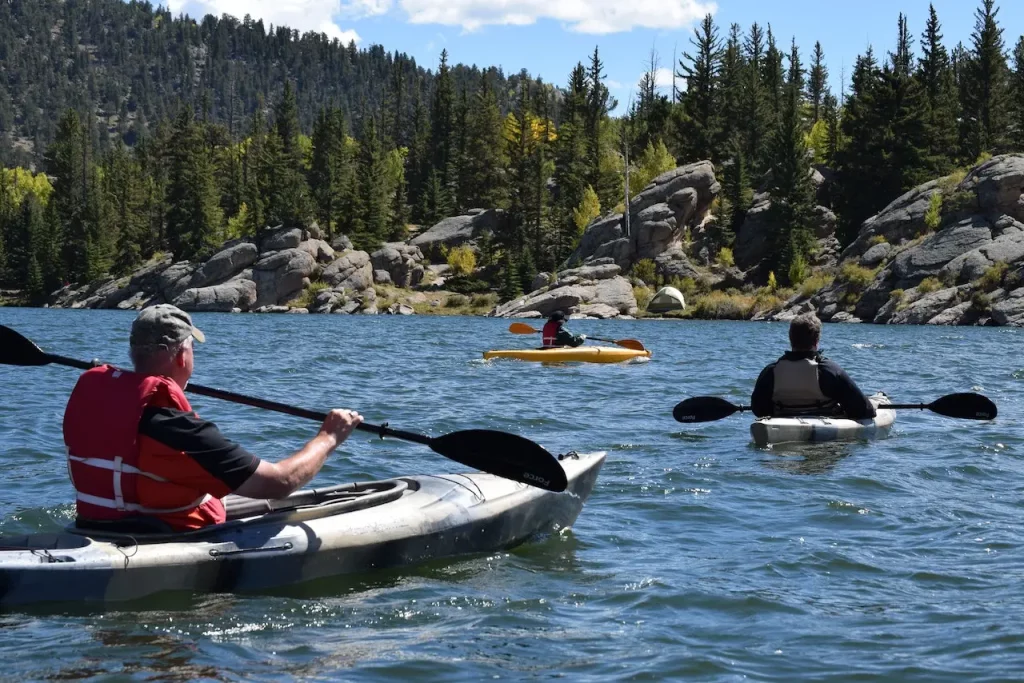
A. Physical training
1. Core strength and its importance
Core strength is vital for kayak racers as it provides stability, balance, and the rotational force required during paddling. A strong core helps paddlers maintain a more efficient posture and reduces the risk of injury.
2. Endurance and cardiovascular exercises
To maintain pace and stamina during long races, cardiovascular health is essential. Activities like running, swimming, and cycling can help build endurance. Interval training, where high-intensity exercises are followed by rest periods, can simulate the burst-and-recover nature of many kayak races.
B. Skill training
1. Essential strokes and maneuvers
Proficiency in various paddle strokes, such as forward stroke, reverse stroke, sweep strokes, and draw strokes, ensures agility and speed in the water. Additionally, learning maneuvers like edging, rolling, and bracing prepares paddlers for unpredictable water situations.
2. Reading and navigating water currents
Understanding river hydrodynamics and being able to read currents, whirlpools, and eddies is crucial for slalom and downriver kayaking. This knowledge helps paddlers anticipate the boat’s movement and adjust their course proactively.
C. Nutrition and hydration
Balanced nutrition is key for optimal performance. Paddlers should prioritize a mix of carbohydrates for energy, proteins for muscle repair, and fats for sustained energy. Staying hydrated, especially during long races or hot weather, is equally crucial.
D. Mental preparation and strategies
Visualization, meditation, and goal setting can enhance focus, reduce pre-race anxiety, and improve performance. Strategies also include scouting race routes, understanding competitors, and planning pacing techniques.
Safety Considerations
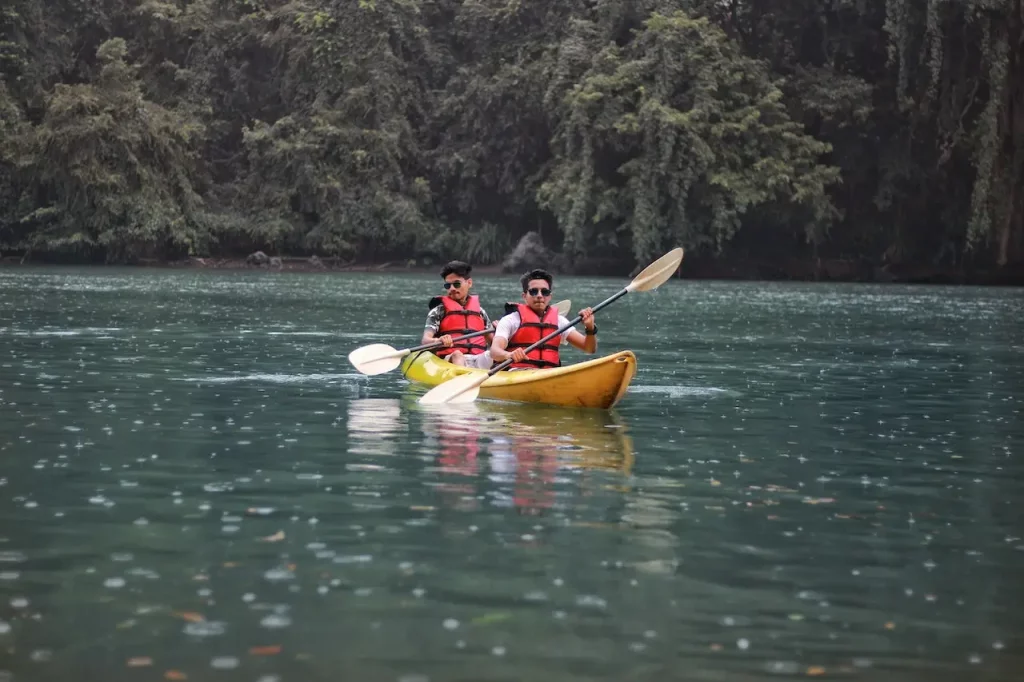
A. Personal safety gear
1. Helmets and their significance
While often used in whitewater and slalom kayaking, helmets protect against head injuries from collisions with obstacles or capsizing.
2. Lifejackets and their fit
Lifejackets, or personal flotation devices (PFDs), are mandatory in most races. A well-fitted PFD ensures buoyancy without restricting movement.
B. Boat safety equipment
1. Floatation bags and their role
Placed inside the kayak, these inflatable bags prevent the boat from fully submerging when capsized, aiding in quicker recoveries.
2. Emergency repair kits
These kits typically include duct tape, epoxy, and patches to manage minor damages during a race.
C. Environmental precautions
1. Weather conditions and their implications
Being aware of and prepared for potential weather changes, such as storms, high winds, or temperature drops, is crucial for safety.
2. Understanding water temperatures and hypothermia
Cold water can rapidly lead to hypothermia. Paddlers should be equipped with appropriate clothing, such as drysuits or wetsuits, in colder conditions.
Participating in Competitions
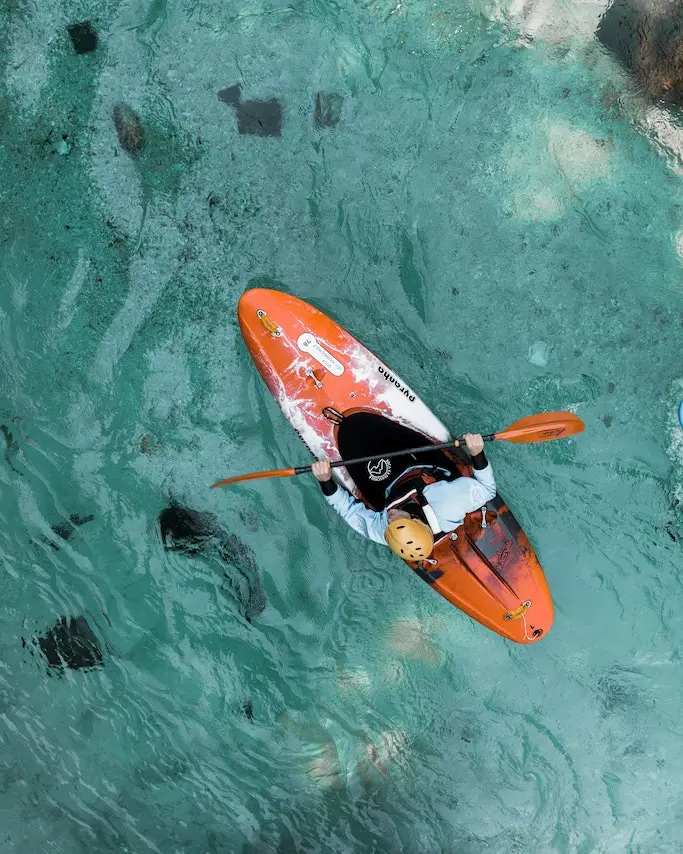
A. Finding races and events suitable for one’s skill level
Beginners might start with local races or clinics, while advanced paddlers may aim for national or international championships. Various kayaking organizations and online platforms offer event calendars and details.
B. Registration and pre-race preparations
Early registration often comes with benefits like discounted fees. Pre-race routines might include equipment checks, course scouting, and attending pre-race briefings.
C. Race day tips and strategies
Stay hydrated, warm-up thoroughly, stick to the race plan but remain adaptable, and, most importantly, enjoy the experience.
D. Post-race recovery and feedback
Cool down, rehydrate, and refuel. Reflect on performance, note areas for improvement, and gather feedback from coaches or fellow paddlers.
Maintenance and Care of Racing Kayaks
A. Regular cleaning and storage
Rinse the kayak with freshwater after each use, especially if used in saltwater. Store in a cool, dry place, preferably off the ground.
B. Checking for wear and potential damages
Inspect for cracks, dents, or wear regularly, particularly after rough races.
C. Repairs and replacements
While minor damages can be repaired with emergency kits, significant damages might require professional help or part replacements.
D. Transporting and protecting your kayak
Use proper roof racks and padding during transportation. Protective covers can shield the kayak from UV rays and other environmental factors.
Conclusion
From the thrill of speed to the camaraderie among paddlers, kayak racing offers a unique blend of physical challenge and mental satisfaction. The world of kayak racing is vast and ever-evolving. Continuous learning, training, and participation not only improve skills but also deepen one’s appreciation for this exhilarating sport.
Read More about Kayaks:
- What to Wear for Kayaking in Summer
- How to Store a Kayak in the Garage
- What is a Skeg on a Kayak
- What is a Tandem Kayak
- How to Build a Homemade Kayak Launch
- How to Get in a Kayak
- What to Wear for Kayaking?
- How to Transport a Kayak Without a Roof Rack?
- How to Build a Kayak Rack for an RV?
- Are Inflatable Kayaks Safe?
- How to Build a Rack for Kayaks?
- Do Kayaks Have a Weight Limit?
- Wilderness Systems Pungo 120 Kayak Review
- Is it hard to kayak?
- How to Lock a Kayak?
- Where to Kayak in Florida Without Alligators?
- Where to Kayak with Manatees?

Hi, I’m Steve, the passionate kayaking enthusiast behind Outdoor Bravo. As an avid adventurer and nature lover, kayaking has been a central part of my life for as long as I can remember. My love affair with the water began during my childhood, and it has only grown stronger over the years. From serene lakes to rushing rivers and even challenging ocean tides, I’ve navigated various water bodies, seeking new thrills and unforgettable experiences.
